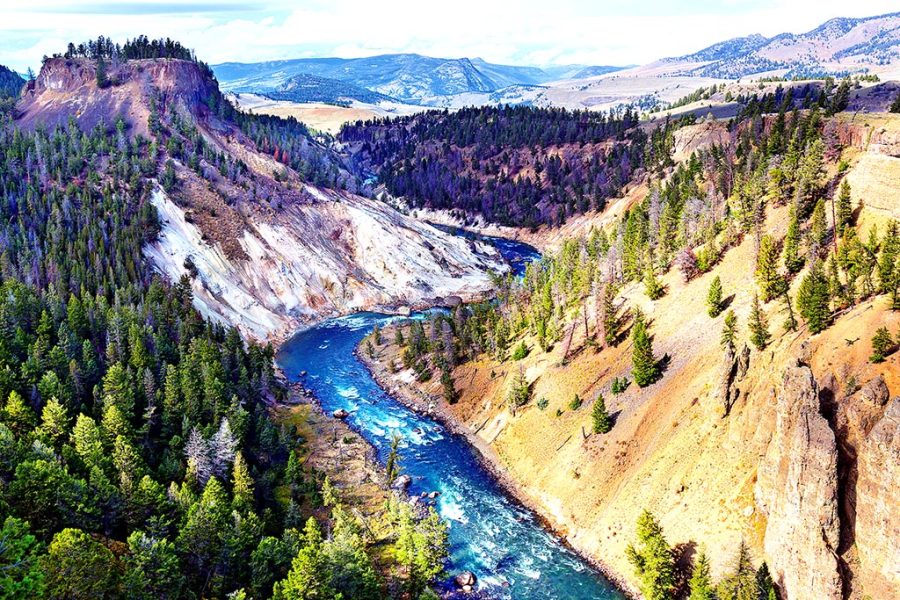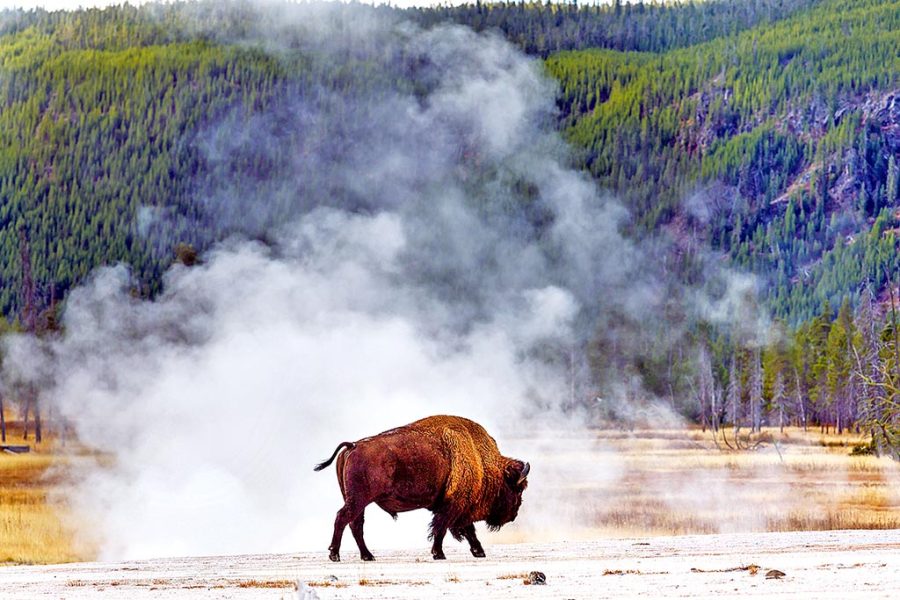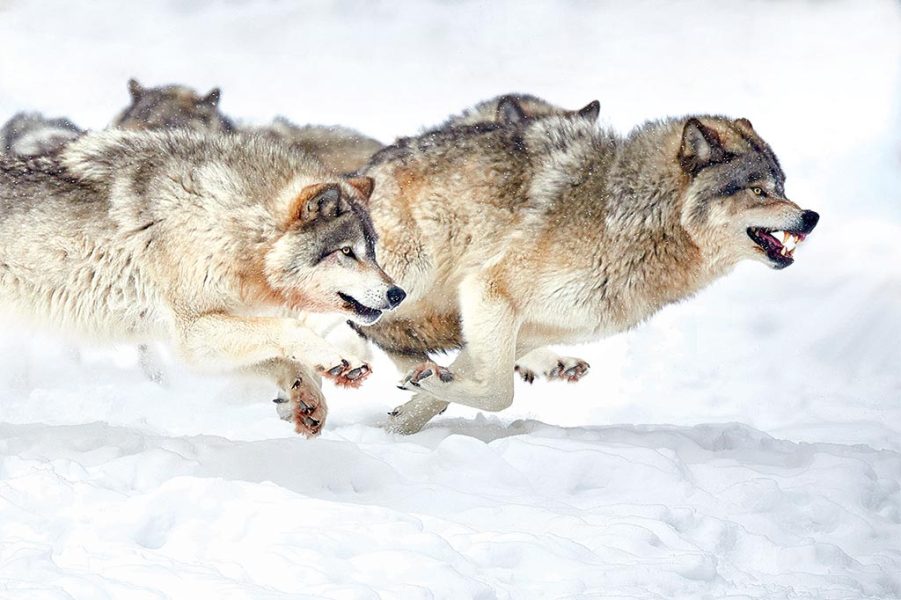Yellowstone’s stunning natural beauty inspired the 19th-century push to set aside the land, where Indigenous people had been present for millennia
There are 63 national parks in the United States, but none has captivated the American imagination quite like Yellowstone National Park, the very first of its kind. The park encompasses more than 2 million acres across Wyoming, Montana and Idaho, and showcases unique natural features and stunning wildlife. But without the efforts of a dedicated few, it might never have existed at all.
While the majesty and wonder of public parks is obvious to visitors today, in 1872 the idea of setting aside such a vast territory was hard to grasp. In the post-Civil War era, land was being parceled and sold to investors and developers in pursuit of immediate economic benefits. The notion of preserving land for the recreational enjoyment of future generations was not widely embraced nor understood.
But the ideas on which Yellowstone was founded—public access, enjoyment of nature, and conservation of wilderness—took root in the American imagination, and inspired the creation of subsequent national parks across the United States and around the world.
HISTORY OF YELLOWSTONE
Though national parks are often imagined as untouched wilderness, Yellowstone was shaped by the continuous presence of Indigenous people on the lands and waters for thousands of years. Long before the first settlers encountered Yellowstone, at least 27 federally-recognized Native tribes had connections to the region that dated back to time immemorial.

The array of tribal names for the area reflected its importance and meaning: the Crow called it Aw’Pawishe, meaning “land of steam,” while the Assiniboine and Sioux called it Pahaska, or “white mountain country.” The Tukudika, a Shoshone band, lived year-round in what would become Yellowstone National Park, while other tribes traveled through the area for trade, subsistence and ceremonies.
Yellowstone was especially valuable as a source of obsidian, a volcanic glass used to make knives, arrowheads and other tools, and more than 50 ancient obsidian quarry sites have been documented in the park by archeologist Douglas MacDonald.
The Crow called it Aw’Pawishe, meaning “land of steam,” while the Assiniboine and Sioux called it Pahaska, or “white mountain country”
After Yellowstone National Park was established in 1872, park officials began to forcibly deter Native Americans from entering and using the park, and the Tukudika were relocated from their home in Yellowstone to nearby reservations. “Yellowstone National Park is surrounded by Indian reservations,” says Mark Fiege, professor of History at Montana State University. “And their creation was directly related to the creation of the Yellowstone National Park boundary.”

Concerned that their presence would deter tourism, administrators perpetuated the false idea that the tribes were afraid of the geothermal features and voluntarily avoided the area. Meanwhile, regulations enacted to protect the wildlife and natural features of the park were also used to prohibit Native Americans from hunting, fishing or gathering obsidian and other materials.
FIRST SETTLER EXPEDITIONS INTO YELLOWSTONE
The first reported non-Native visitor to Yellowstone was John Colter, a member of the Lewis & Clark Expedition, who explored some of the region in the winter of 1807 and 1808 in pursuit of trapping and fur trading opportunities.
For the next 60 years, descriptions of geysers and hot springs were relayed by Colter and other mountain men, until organized expeditions began in 1869 with the Folsom-Cook expedition. Many believe that the idea of a national park first arose during the subsequent Washburn-Doane Expedition of 1870, during a conversation around the campfire by members of the party who were awed by the natural wonders they encountered.
However, there were more pragmatic reasons to consider creating a national park. “No one could think of anything useful to do with it,” says Patricia Limerick, professor of history and director of the Applied History Initiative at the University of Colorado Boulder. The high, mountainous terrain was ill-suited for agriculture, logging or development. “But what made it useful was railroads, because they needed places to stop, places for people to go. The advent of railroads was very important for public parks, even though trains and wilderness seem kind of opposed.”
In the words of historian Paul Schullery, “The idea of Yellowstone is, like nature itself, a work in progress.”
Nathaniel Langford, a member of the Washburn party, was approached by Northern Pacific Railroad CEO Jay Cooke, who felt that promoting Yellowstone as a tourism destination could help to secure support for his planned rail extensions through Montana.
As historian Paul Schullery writes in Searching For Yellowstone, Langford gave a number of lectures about Yellowstone upon his return from the area that were financed by Cooke. One of these talks captivated a geological surveyor named Ferdinand V. Hayden. Hayden obtained congressional support for an exploration in 1871, and brought with him a photographer named William Henry Jackson and a painter, Thomas Moran.
Like the Washburn expedition, Hayden’s party returned to the nation’s capital with remarkable stories and samples from Yellowstone. But thanks to Moran and Jackson, they also had photographs, sketches and oil paintings, many of which were exhibited in Congress as senators contemplated the proposal to establish a park.
Images like Grand Canyon at Yellowstone Park or the towering Old Faithful geyser, captivated the public imagination more than reports or speeches ever could. In the words of Hiram M. Chittenden, Captain of the Corps of Engineers “the regions where such wonders existed should be preserved to the people forever.”
YELLOWSTONE BECOMES A PARK
President Ulysses S. Grant signed the Yellowstone National Park Protection Act on March 1, 1872, which declared the park was “hereby reserved and withdrawn from settlement, occupancy, or sale under the laws of the United States, and dedicated and set apart as a public park or pleasuring ground for the benefit and enjoyment of the people.”
(While it’s often referred to as the first national park in the world, that title arguably belongs to Bogd Khan Uul National Park, which was protected by the Mongolian government in 1783.)
The language of the act reflected the higher aspirations of public lands for crafting America’s national identity. Frederick Law Olmstead, a landscape architect who co-designed New York City’s Central Park and drafted a charter for Yosemite in 1865, wrote passionately about the obligation of the government to protect such places. “It is the main duty of government, if it is not the sole duty of government, to provide means of protection all citizens in the pursuit of happiness,” wrote Olmsted, arguing that happiness could be found through the “occasional contemplation of natural scenes of an impressive character.” Public parks, wrote Olmsted, ensured such happiness was available to all citizens, upholding the values of unity, liberty and equality.

Despite these democratic ambitions, the creation of Yellowstone and other national parks was not without tension, particularly among the locals. “Before the park was created, people hunted for food,” says Limerick. “After the park was created, that became an illegal act called poaching. And that changed the whole tenor of life in neighboring communities.”
In the words of historian Paul Schullery, “The idea of Yellowstone is, like nature itself, a work in progress.” As public understandings of Native rights and history evolve, the legacy of Yellowstone becomes more complicated in retrospect. Challenging, dynamic character is what makes the park so special.
“It never stands still, it always changes. And it will always be a place that challenges the mind,” says Limerick, “The geysers and hot springs, all the many different forms of life—it’s chronically, wonderfully unsettling. Is that always comfortable? No! But we can’t make it into an interchangeable part of the American experience.”
By Michelle E Cyca